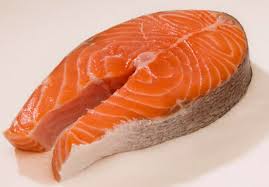
If You Feed Salmon to Your Pet (or Eat It Yourself), Please Read This
By Dr. Becker
The week before Christmas, the FDA determined that the first
genetically engineered (G.E.) animal – a type of salmon – will have “no
significant impact” on the environment, and will be “as safe as food
from conventional Atlantic salmon.”
The FDA’s draft environmental assessment
will be open for public comment for two months, but according to the
New York Times, it seems likely the salmon will be approved in the
not-too-distant future. (Interestingly, the assessment was completed in
early May, but wasn’t released until after the presidential election in
November. According to the NYTimes, proponents of the salmon believe the
delay was due to fear by the Obama administration that unfavorable
consumer reaction could have an impact on the outcome of the election.)
According to the FDA, G.E. Salmon is Safe to Eat and No Risk to the Environment
AquaBounty Technologies is the company that developed the product,
called the AquAdvantage salmon. They have been trying to get FDA
approval of the salmon for around 15 years.
According to the NYTimes, the AquAdvantage salmon “… is an
Atlantic salmon that contains a growth hormone gene from the Chinook
salmon and a genetic switch from the ocean pout, an eel-like creature.
The switch keeps the gene on so that the salmon produces growth hormone
year round, rather than only during warm weather. The fish reach market
weight in about 18 months instead of three years.”
The FDA’s environmental analysis of the G.E. salmon looked at whether
the fish could escape, adapt to life in the wild, and have a negative
impact on the environment. One concern is whether the much larger
AquAdvantage salmon could spell disaster for the wild Atlantic salmon by
taking its food and mates.
The FDA concluded the risk of negatively affecting the environment is
“extremely remote.” It states the salmon will be raised in inland tanks
with little to no means of escape, and in the event of escape, the fish
wouldn’t live long due to the warm temperatures and saltiness of nearby
bodies of water. The agency also claims the G.E. salmon would be
unlikely to reproduce because they would be sterilized, however,
according to the Times, the sterilization method is not foolproof.
The FDA believes the salmon would have no effect on endangered
species, including wild Atlantic salmon. Apparently the National Marine
Fisheries Service and the Fish and Wildlife Service did not take issue
with the FDA’s opinion.
Opponents of “Frankenfish” Vehemently Disagree with the FDA’s Assessment
According to the Huffington Post, critics of the genetically engineered salmon, “…
worry that it could cause human allergies and the eventual decimation
of the natural salmon population if it escapes and breeds in the wild.”
Opponents think the FDA should compile a more comprehensive
environmental impact statement. They feel not enough samples were
studied to conclude that the fish would be safe to eat.
Others opposed to the breeding of engineered animals believe it’s an issue of ethics.
“The G.E. salmon has no socially redeeming value,” Andrew
Kimbrell, executive director of the Center for Food Safety (CFS), a
Washington advocacy group opposed to farm biotechnology, said in a
statement. “It’s bad for the consumer, bad for the salmon industry
and bad for the environment. F.D.A.’s decision is premature and
misguided.”
In a December 21st press release, the CFS blasted the FDA:
“The FDA decision ignores calls from more than forty members of
the U.S. Congress who have repeatedly urged FDA to conduct more rigorous
review of environmental and health safety, and halt any approval
process until concerns over risks, transparency and oversight have been
fully satisfied. The public filed nearly 400,000 comments demanding FDA
reject this application. Additionally, more than 300 environmental,
consumer, health and animal welfare organizations, salmon and fishing
groups and associations, food companies, chefs and restaurants filed
joint statements with FDA opposing approval.”
You can learn more details about the potential risks of genetically engineered salmon at the Ocean Conservancy, the “Stop GE Fish” page at the Center for Food Safety, and by reading Dr. Mercola’s excellent article, Act Now to Stop Genetically Engineered Fish from Receiving Approval.
Feeding Salmon to Your Pet
As some of you may be aware, I don’t recommend feeding a lot of
fish-based commercial pet foods to your dog or cat. I explain why in this article.
But since fish are a rich source of omega-3 fatty acids,
which are essential to your pet's well-being, if you do want to
supplement your pet's diet with fish, I suggest you go with sardines
packed in water. Sardines don't live long enough to store toxins in
their bodies, and they're an excellent source of omega-3s.
I have also always recommended feeding wild caught salmon in rotation
with other proteins, however, should G.E. salmon be given the green
light, I’ll have to revisit my position on this subject. It’s entirely
possible we won’t be able to tell by reading labels whether we’re
serving our pets (or ourselves) real salmon or “frankenfish.”
If you choose not to feed any fish to your dog or cat, I certainly
recommend you supplement your pet's diet with krill oil or another
omega-3 fatty acid.

No comments:
Post a Comment